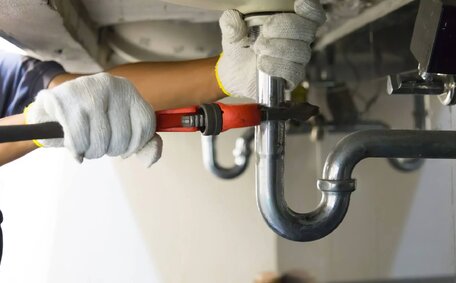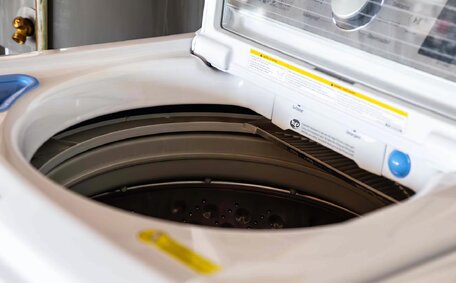Identifying the Source of Low Water Pressure
When tackling low water pressure issues, the first step is to check all water outlets in your home, including sinks, showers, bathtubs, and exterior hose bibs. Compare the flow rates and pressure at each one.
This will help determine if the water pressure can be considered an isolated or widespread issue within your home. If all fixtures have low flow, it likely indicates a whole house issue like old galvanised supply pipes, clogged water filters, faulty pressure regulators, or problems with your main water line or municipal supply.
Conversely, if the low pressure only affects one room or area, the problem may lie in the shutoff valves, supply lines, shower heads, faucet aerators or other components in that localised system.
Other areas to inspect are your water meter, main stop valve, pressure gauge, and flow water pumps or booster systems if you have them. Examine your pressure tank, and check pipes your property for leaks, blockages from sediment, corrosion, valve failures or booster pump issues. This hands-on testing helps increase water pressure your house and pinpoint issues.
If no underlying factors are found, low water pressure can necessitate a call to a professional plumber to check your pressure regulator and diagnose your system. They can perform a water pressure test, inspect pipes, supply lines and components to assess your water pressure. A leak detection specialist may also be needed to check for hidden leaks.
Common Causes of Reduced Water Flow
There are several common factors that cause low water pressure in your plumbing:
- Corroded galvanised pipes or mineral deposits restricting flow. Over time, or as your plumbing system was built, it may have accumulated rust, scale, or sediment, which can cause narrow passageways within your pipes.
- Partially clogged pipes or aerators from sediment or contaminants— wondering how fix these issues? Small blockages disrupt water flow.
- Failing pressure limiting devices like water pressure regulators unable to maintain adequate pressure, which pipes can suffer from.
- Undersized piping unable to deliver sufficient flow, especially to upper levels.
- High water usage during peak times overloading the system capacity.
- Nearby water main breaks or planned works decreasing overall supply.
Inspecting your water pipes and plumbing infrastructure can help pinpoint flow restrictions. A plumber can then fix low water pressure by clearing clogs or buildup and addressing worn parts like regulators or pipes as needed to restore optimal pressure and flow in your house.
DIY Troubleshooting Tips
Before calling your plumber for low water pressure, there are some handy steps you can try to pressure house systems:
Check Pressure at All Fixtures
Compare water flow from taps and showers on the lowest and highest building levels. Low pressure at only high floors indicates issues in risers like buildup, kinks or breaks. Equal low pressure throughout indicates an issue with main lines or the restricted municipal water supply.
Inspect Key Plumbing Components
Check water stop tap, main water shutoff valve, metres, supply lines, pressure regulators and pumps for problems. Look for any signs of leaks, jams, corrosion and When necessary, call your service provider to turn water supply off to prevent further disruptions or damage. A compromised water supply can necessitate the replacement and turning of galvanised pipes prone to built-up rust and scale if found.
Open valves fully.
Clean Faucet Aerators
Unscrew and soak sink and shower head aerators in vinegar to dissolve mineral deposits clogging small water outlets, ensuring optimal water per outlet. Use drain cleaner for stubborn build up. Flush pipes can reduce sediment buildup after reattaching clean aerators.
Monitor Water Usage
Major household demand during peak times, when multiple water outlets are used at the same time, can contribute to low hot water pressure, stressing the water system infrastructure. Stagger use of showers, washing machine, and dishwashers. Consider an on-demand or thermal recirculation pump to boost pressure for your hot water system.
Address any water leak promptly.
Call the Municipality
Contact your water provider of pressure drops following main pipe flushing. Schedule large household water usage for periods outside your peak hours to avoid systemwide pressure drops. Report plumbing issues to your local water authorities that require street access.
Trying these basic steps can fix low hot water pressure and restore decent levels. But for chronic or complex cases, enlisting the help of your local plumbers to inspect and remedy your system is advisable.
When Professional Help is Needed
There comes a point when DIY troubleshooting won’t cut it for persistent or complex low water pressure problems. Professional help ensures the issue is properly diagnosed and fixed, particularly when the root of the problem lies within your internal plumbing systems.
Seeking assistance is advised if you’re experiencing low water pressure in your home around 20 psi and below, or a water flow rate of less than 8 litres per minute. Extremely high water bills signalling leaks likewise warrant experts.
Plumbers have the skills, tools and authority to handle tricky tasks, providing peace of mind about your house’s internal plumbing that can ensure optimal water pressure. This includes:
- Detecting pipe leaks in your front garden requiring excavation or pipe replacement
- Adjusting your main water supply components and pressure settings
- Modifying or upgrading your homes’ plumbing infrastructure
- Liaising with municipalities regarding external water supply issues
At Carlingford Plumbing Services, our team can expertly troubleshoot any water flow problems with licensed plumber technicians. We serve your area in Sydney on short notice, 24/7 for emergencies concerning your hot water needs, including water heater repairs. Contact us today or check out our website for prompt repairs and solutions ensuring adequate home water pressure.
Preventing Low Pressure Problems
Being proactive helps avoid your low water pressure problems down the track. Consider several preventative measures to maintain optimal flow:
Monitor Usage
Check metres during average and peak water usage times. Use timers in showers. Compare usage month-to-month to detect increasing demand signalling leaks.
Inspect Key Components
Annually check main shut off valves, pressure regulators, galvanised pipes, and outlets for consistent water flow rate, corrosion, failures, or needed repairs.
Service Filtration Systems
Improve your water quality by replacing old water filters as recommended, handling gallons of water, particularly to maintain clean, safe drinking water, especially if you have hard water. Clean scale buildup in mineral filters. Keep aerators, strainers and softeners clear of sediment.
Flush Pipes Regularly
Annual pipe flushing removes silt and rust accumulation. Isolate troublesome galvanised areas prone to corrosion. Pretreat with descaler before flushing.
Insulate Pipes
Insulate exposed main lines and risers to prevent freezing in winter, which hampers cold water flow, and overheating in summer which can crack pipes over time.
Being vigilant to detect early warning signs lets you proactively address problems before they escalate and restrict your home’s water pressure further.
How Pressure Regulators Control Flow
Pressure regulators, key to maintaining steady pressure flow, are vital components in plumbing systems. They help ensure fixtures and appliances receive an adequate, consistent flow of water within a safe pressure range measured in PSI (pounds per square inch).
Regulators connect to the main water supply line near where it enters your house, maintaining the water pressure at a stable PSI (per square inch). As water flows into your plumbing, regulators use spring-loaded valves and adjustable screws to maintain your optimal preset pressure, usually between 35 to 80 PSI.
If pressure rises too high from surges, increased municipal supply, or pipe friction, it’s time for the regulator valve to partly close to restrict the flow and lower pressure. When pressure drops too low, it’s time for the valve to open wider, restoring regular flow.
Over time, regulators wear out or cannot counter significant pressure fluctuations. You may experience intermittent loss of pressure, flows slowing to a trickle or pressure spikes causing pipes to hammer or fittings burst.
It’s time to consider replacing old or damaged regulators as recommended. Have a plumber inspect your regulator and test pressure.
Adjustments or decisions to install water pressure enhancement devices can also help if pressure creeps too low from mineral buildup dirtying the device. Install a new regulator or water pressure booster if needed to keep your plumbing flowing properly.
Fixture-Specific Issues
Certain plumbing fixtures prone to their own specific flow problems include:
Faucet Aerators
Over time, small perforated screens inside faucet aerators capture mineral sediment. This restricts water flow even if pressure is adequate elsewhere. Soaking or replacing aerators is an easy first step before further troubleshooting.
Showerheads
Like sink aerators, showerheads contain flow restrictors meeting water efficiency standards. Like sink aerators, showerheads contain flow restrictors meeting water efficiency standards.
These small in-line filters easily clog, which causes low water pressure by blocking water flow. Clean or upgrade fixtures.
Outside Hose Bibs
Exterior taps often have individual shutoff valves inside. Make sure these are fully open in summer. In winter, disconnect hoses and drain pipes to prevent freezing and cracking that can dramatically reduce outdoor water flow come spring.
Isolating these fixture-specific issues helps determine if low pressure stems from that location or a whole house problem requiring more extensive repairs.





